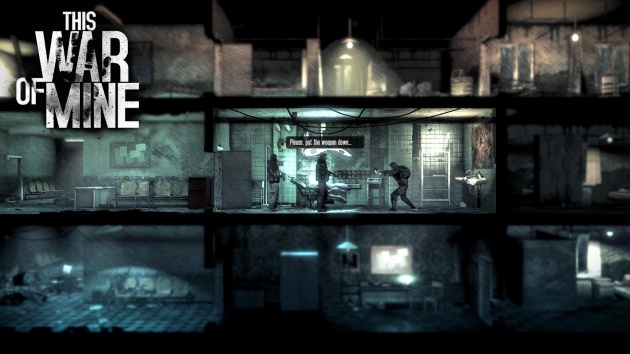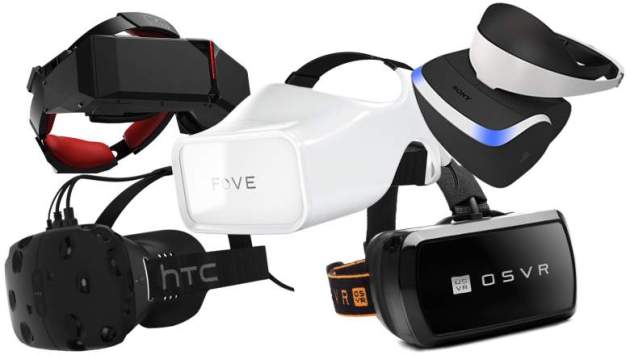What Does It Take To Become A Programmer?
June 5, 2016 3 Comments
So these are my thoughts on this article (hint, it’s utter tripe): Programming Doesn’t Require Talent or Even Passion.
On the one hand, this article espouses a good sentiment (you don’t have to be gifted to learn programming). On the other, it completely disregards the important idea that being able to do something is not the same as being able to do it well.
I can draw, but anyone who has seen me draw would agree that I’m pretty bad at it. I can draw just well enough to get my concepts across to other people. However, if I intended on becoming an artist for a living, I should probably learn about proportions, shading, composition, perspective, color theory, and be able to work with a range of mediums. Of course, there isn’t some big secret to learning these things. You just practice every day and study good artistic work, analyzing how it was made. Maybe you take some courses, or read some books that formally teach certain techniques. After thousands of invested hours, you will find that your drawing has radically improved, as shown again and again by progress comparison pictures (that one is after 2 years of practice).
The same holds true for programming. Anyone can learn programming. It requires nothing except a little dedication and time. But the article starts out by promising to ‘debunk’ the following quote (I’m not sure if it’s actually a real quote – they don’t attribute it to anybody):
You not only need to have talent, you also need to be passionate to be able to become a good programmer.
The article immediately ignores the fact that the ‘quote’ is talking about good programmers. Just like becoming a good artist requires artistic talent and a passion for learning and improving every day, good programmers are driven by the need to learn and improve their skills. Perhaps an argument can be made for “talent” being something you acquire as a result of practice, and thus you don’t need talent to start becoming good; you become good as you acquire more and more talent. This is a debate for the ages, but I would say that almost invariably a passion for a skill will result in an early baseline proficiency, which is often called “talent”. Innate talent may or may not exist, and it may or may not influence learning ability.
It doesn’t really matter though, because the article then goes on to equate “talent” and “passion” with being a genius. It constructs a strawman who has always known how to program and has never been ignorant about a single thing. This strawman, allegedly, causes severe anxiety to every other programmer, forcing them to study programming at the exclusion of all else. It quotes the creator of Django (after affirming that, yes, programmers also suffer from imposter syndrome):
Programming is just a bunch of skills that can be learned, it doesn’t require that much talent, and it’s not shameful to be a mediocre programmer.
Honestly, though, the fact of the matter is that being a good programmer is incredibly valuable. If your job is to write code, you should be able to do it well. You should write code that doesn’t waste other people’s time, that doesn’t break, that is maintainable and performant. You need to be proud of your craft. Of course, not every writer or musician or carpenter takes pride in their craft. We call these people hacks and they churn out deplorable fiction that only shallow people read, or uninteresting music, or houses that fall down in an earthquake and kill dozens of people.
So, unless you want to be responsible for incredibly costly and embarrassing software failures, you better be interested in becoming a good programmer if you plan on doing it for a career. But nobody starts out as a good programmer. People learn to be good programmers by having a passion for the craft, and by wanting to improve. If I look at older programmers and feel inferior by comparison, I know it’s not because they are a genius while I am only a humble human being. Their skill is a result of decades of self-improvement and experience creating software both good and bad.
I think it’s telling that the article only quotes programmers from web development. Web development is notorious for herds of code monkeys jumping from buzzword to buzzword, churning out code with barely-acceptable performance and immense technical debt. Each developer quote is followed by a paragraph that tears down the strawman that was erected earlier. At this point, the author has you cheering against the supposedly omnipresent and overpowering myth of the genius programmer — which, I might remind you, is much like the myth of the genius painter or genius writer; perhaps accepted by those with a fixed mindset, but dismissed by anybody with knowledge of how the craft functions. This sort of skill smokescreen is probably just a natural product of human behavior. In any case, it isn’t any stronger for programming than for art, writing, dance, or stunt-car driving.
The article really takes a turn for the worse in the second half, however. First, it effectively counters itself by quoting jokes from famous developers that prove the “genius programmer” myth doesn’t exist:
* One man’s crappy software is another man’s full time job. (Jessica Gaston)
* Any fool can write code that a computer can understand. Good programmers write code that humans can understand.
* Software and cathedrals are much the same — first we build them, then we pray. (Sam Redwine)
The author LITERALLY ASKS: “If programmers all really had so much talent and passion, then why are these jokes so popular amongst programmers?”, as if to prove that he was being intellectually dishonest when he said back in the beginning “It’s as if people who write code had already decided that they were going to write code in the future by the time they were kids.”
But the absolute worst transgression the article makes is quoting Rasmus Lerdorf, creator of PHP. PHP is a server-side language. It is also one of the worst affronts to good software design in recent history. The reason it was the de facto server-side language before the recent Javascript explosion is that it can be readily picked up by people who don’t know what they are doing. Like you would expect from a language designed by someone who “hates programming” and used by people who don’t what they are doing, PHP is responsible for thousands of insecure, slow, buggy websites.
PHP’s shortcoming are amusingly enumerated in this famous post: PHP – a fractal of bad design. In the post, the following analogy is used to illustrate how PHP is bad:
I can’t even say what’s wrong with PHP, because— okay. Imagine you have uh, a toolbox. A set of tools. Looks okay, standard stuff in there.
You pull out a screwdriver, and you see it’s one of those weird tri-headed things. Okay, well, that’s not very useful to you, but you guess it comes in handy sometimes.
You pull out the hammer, but to your dismay, it has the claw part on both sides. Still serviceable though, I mean, you can hit nails with the middle of the head holding it sideways.
You pull out the pliers, but they don’t have those serrated surfaces; it’s flat and smooth. That’s less useful, but it still turns bolts well enough, so whatever.
And on you go. Everything in the box is kind of weird and quirky, but maybe not enough to make it completely worthless. And there’s no clear problem with the set as a whole; it still has all the tools.
Now imagine you meet millions of carpenters using this toolbox who tell you “well hey what’s the problem with these tools? They’re all I’ve ever used and they work fine!” And the carpenters show you the houses they’ve built, where every room is a pentagon and the roof is upside-down. And you knock on the front door and it just collapses inwards and they all yell at you for breaking their door.
That’s what’s wrong with PHP.
And according to Rasmus Lerdorf, the creator of this language:
I’m not a real programmer. I throw together things until it works then I move on. The real programmers will say “Yeah it works but you’re leaking memory everywhere. Perhaps we should fix that.” I’ll just restart Apache every 10 requests.
It’s like the article is admitting that if you don’t take the time to learn good programming principles, you are going to be responsible for horrible systems that cause headaches five years down the line for the people maintaining them and that regularly allow hackers to access confidential personal information like patient information and social security numbers for millions of people.
So yes, if you aren’t planning on programming for a career, learning to program is fairly straightforward. It’s as easy as learning carpentry or glass-blowing. It might seem daunting, but invest a half dozen hours and you can have your foot solidly in the door.
But if you plan on building systems other people will rely on, you sure are hell better pick up some solid programming fundamentals. If you aren’t motivated to improve your skillset and become a better programmer, don’t bother learning at all. Don’t be the reason that the mobile web sucks, and don’t be the reason that 28 American soldiers died. Learn to be a good programmer.

















